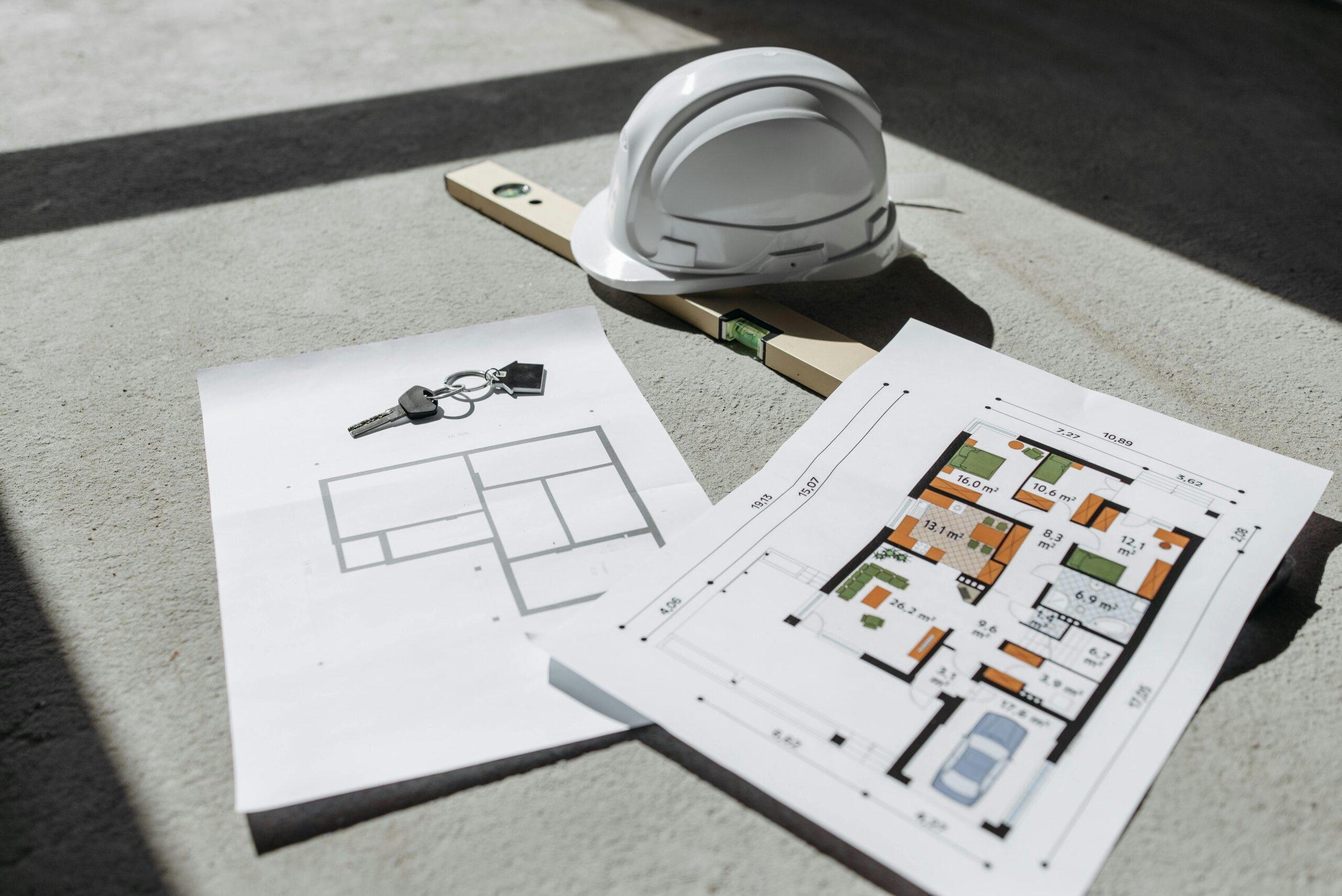Introduction
In the construction industry, accurate estimation is a fundamental component of successful
project execution. Whether you’re a contractor, project manager, or client, the accuracy of your
cost, time, and resource estimates will significantly influence the project’s outcome. A wellexecuted estimate not only helps manage expectations but also ensures that resources are
allocated efficiently, and projects are completed on time and within budget.
In this blog post, we’ll explore how accurate estimations impact construction projects, from
budgeting and resource management to risk mitigation and client satisfaction. We’ll also discuss
the key factors that contribute to accurate estimates and how they can be used to improve project
performance.
Why Accurate Estimations Are Crucial in Construction Projects
The construction industry is complex, with multiple moving parts that require careful planning
and coordination. Any deviation from the estimated time, budget, or resources can lead to costly
delays, disputes, or financial losses. Here’s why accurate estimations are so essential:
- Maintaining Budget Control One of the most significant challenges in construction is
staying within budget. Without accurate cost estimations, it’s easy for a project to
experience cost overruns, often resulting in financial strain or a reduction in profit
margins. A reliable estimate provides the baseline for managing project costs and helps
ensure that the budget is adhered to. - Optimizing Resource Allocation Construction projects require careful management of
resources, including labor, materials, and equipment. Accurate estimations help project
managers allocate these resources efficiently. If resources are overestimated, it could lead
to waste; if underestimated, it could lead to shortages and delays. - Project Schedule Management Accurate estimations help set realistic project timelines.
A well-estimated schedule ensures that tasks are completed on time and in the correct
sequence. If timelines are not accurately estimated, it can result in delays, missed
deadlines, and increased costs due to overtime or rushed work. - Risk Mitigation In construction, numerous risks—ranging from unforeseen site
conditions to material price fluctuations—can derail a project. Accurate estimates help
identify and account for potential risks, allowing for better planning and contingency
strategies. When risks are appropriately assessed, project managers can make informed
decisions that reduce the likelihood of delays or cost overruns. - Client Satisfaction Delivering a project within the agreed budget and timeline is key to
client satisfaction. Accurate estimates not only help set realistic expectations but also
ensure that the project meets or exceeds client expectations in terms of quality, budget,
and timeline. A positive experience with accurate estimations builds trust and could lead
to future projects or referrals
The Role of Estimation in Different Phases of a Construction Projec
Accurate estimation plays a role throughout the construction project lifecycle, from preconstruction planning to post-project evaluation. Let’s break down how accurate estimates affect
each phase:
1. Pre-Construction Phase: Budget and Timeline Planning
During the pre-construction phase, accurate cost and time estimates are essential for securing
contracts, financing, and resources. These estimates give stakeholders, including clients and
contractors, a clear understanding of what to expect in terms of cost, duration, and resource
requirements. Construction professionals often rely on historical data, industry standards, and
specific project details to create preliminary estimates.
Key Benefits:
- Provides a foundation for realistic contract agreements
- Enables clients to secure funding or financing based on accurate figures
- Helps define project scope, which reduces ambiguity and potential disputes
2. Construction Phase: Monitoring and Adjusting Estimates
Once the project is underway, the accuracy of initial estimates becomes critical for monitoring
progress and making adjustments. Accurate cost tracking allows project managers to stay on top
of expenses, and timeline management ensures that work proceeds as planned. During this phase,
it’s essential to revisit initial estimates and adjust them if unexpected challenges arise—such as
delays due to weather, material shortages, or changes in design.
Key Benefits:
- Keeps the project on track, preventing delays or cost overruns
- Enables proactive identification of issues early, allowing for corrective action
- Helps manage cash flow by monitoring expenses against initial estimates
3. Post-Construction Phase: Performance Evaluation and Lessons Learned
After the project is completed, reviewing the accuracy of your estimates is an essential part of
the post-construction evaluation. Comparing the initial estimates with actual costs, timelines, and
resource usage provides valuable insights into the effectiveness of the estimation process. This
analysis helps identify areas for improvement in future estimates, fostering continuous learning
and refinement in the organization’s estimation practices.
Key Benefits:
- Provides valuable feedback to improve future project estimations
- Highlights areas where resource allocation or timeline estimates could be adjusted
- Strengthens the company’s reputation for delivering on promises
Factors Affecting the Accuracy of Construction Estimates
Accurate construction estimates rely on various factors, and even a small miscalculation can
have significant consequences. Here are the main factors that contribute to the accuracy of
construction estimates:
1. Project Complexity
The more complex a project is, the more variables need to be accounted for in the estimation process. Complex projects may involve multiple contractors, specialized equipment, or unique site conditions, all of which require thorough consideration when estimating costs and timelines.
Tip: Break down complex projects into smaller, more manageable components for more accurate
estimates.
2. Historical Data
Historical data from previous projects can provide valuable insights into what to expect in terms of costs and timelines. If similar projects have been completed in the past, using this data can help create more accurate and realistic estimates.
Tip: Maintain detailed records of past projects to build a strong database for future estimations.
3. Site Conditions
Site conditions, such as soil quality, weather patterns, or access to utilities, can greatly impact the accuracy of an estimate. A thorough site assessment during the pre-construction phase is essential to understanding these variables and factoring them into the estimate.
Tip: Conduct site surveys and geotechnical studies to identify potential challenges early.
4. Material and Labor Costs
The cost of materials and labor can fluctuate over time due to market conditions, inflation, or supply chain issues. Estimating material and labor costs accurately requires staying up-to-date on market trends and adjusting estimates accordingly.
Tip: Build contingencies into estimates to account for price fluctuations in materials and labor.
5. Design and Scope Changes
Changes in project design or scope can significantly impact cost and time estimates. Whether it’s a change in the building design, materials, or overall project scope, every modification must be evaluated and re-estimated to avoid discrepancies between the original and actual outcomes.
Tip: Establish a clear change management process to handle scope or design changes and update estimates as necessary.
How Technology is Enhancing Estimation Accuracy in Construction
Advancements in technology have greatly improved the accuracy of construction estimates. Estimation software, digital modeling tools, and project management platforms have made it easier for construction professionals to create precise estimates, track project progress, and
communicate with stakeholders.
1. Building Information Modeling (BIM)
BIM software allows construction professionals to create detailed 3D models of a project, helping visualize potential challenges and estimate materials, labor, and timelines more accurately. BIM can also identify clashes between systems (e.g., electrical, plumbing) before construction begins, reducing costly errors during construction.
2. Cloud-Based Estimation Tools
Cloud-based estimation software allows real-time collaboration and access to up-to-date cost databases, improving accuracy across the entire project team. This technology helps contractors and project managers adjust estimates quickly as new information becomes available.
3. Mobile Estimation Applications
Mobile applications allow construction professionals to collect data from the field, enter it into estimation software, and adjust costs or timelines immediately. This technology enhances accuracy by reducing the chances of errors from manual data entry and enables faster decision-making.
Best Practices for Accurate Construction Estimation
To maximize the benefits of accurate estimation in construction, here are some best practices to follow:
- Use Comprehensive Estimation Tools: Invest in modern estimation software that integrates with other project management tools to provide accurate and up-to-date data.
- Factor in Contingencies: Always include a contingency allowance in your estimates to account for unexpected costs or delays.
- Collaborate with Experts: Engage specialists or subcontractors early in the estimation
process to gather insights and ensure that every aspect of the project is covered. - Regularly Update Estimates: As the project progresses, continually update your estimates based on new information or changes to the project scope.



